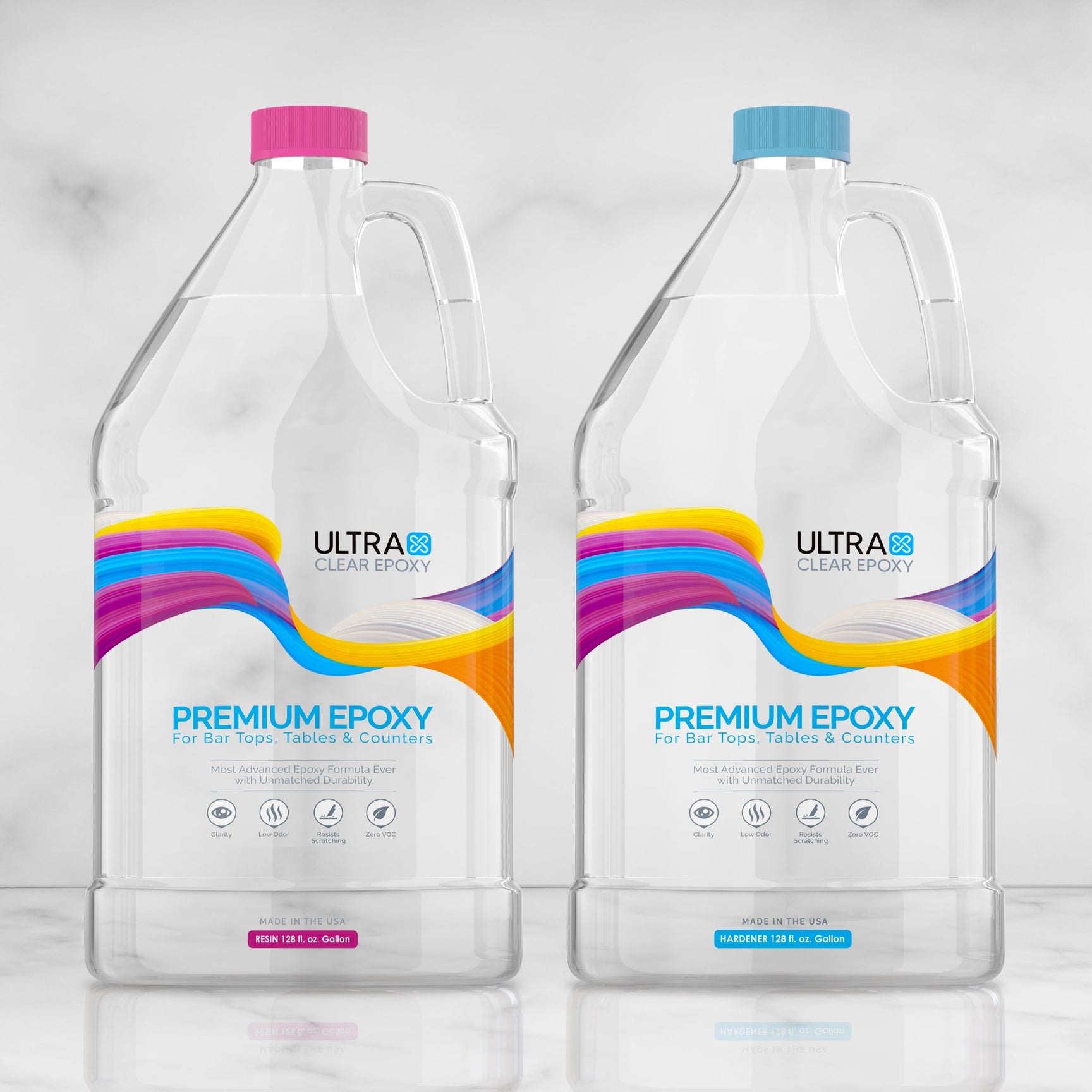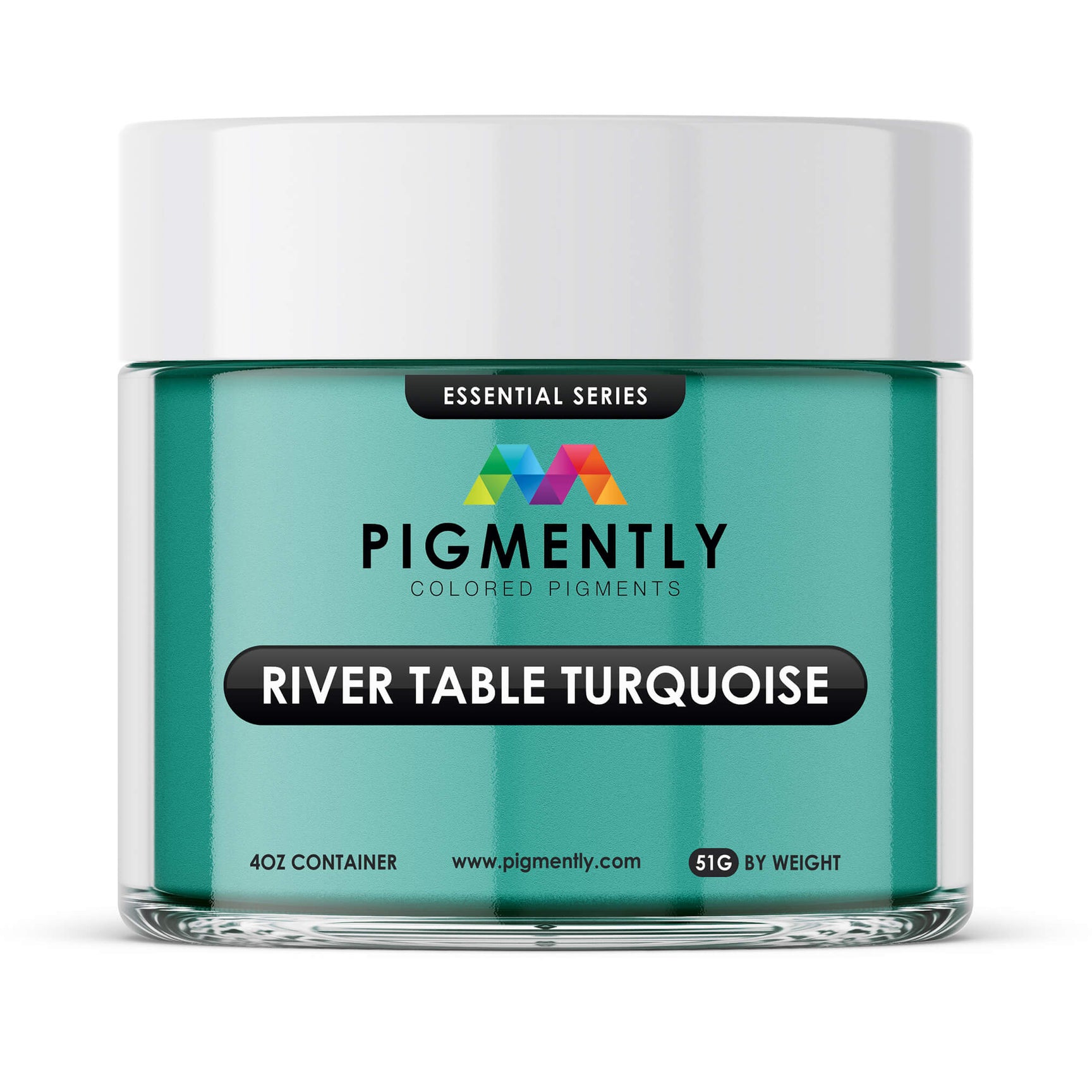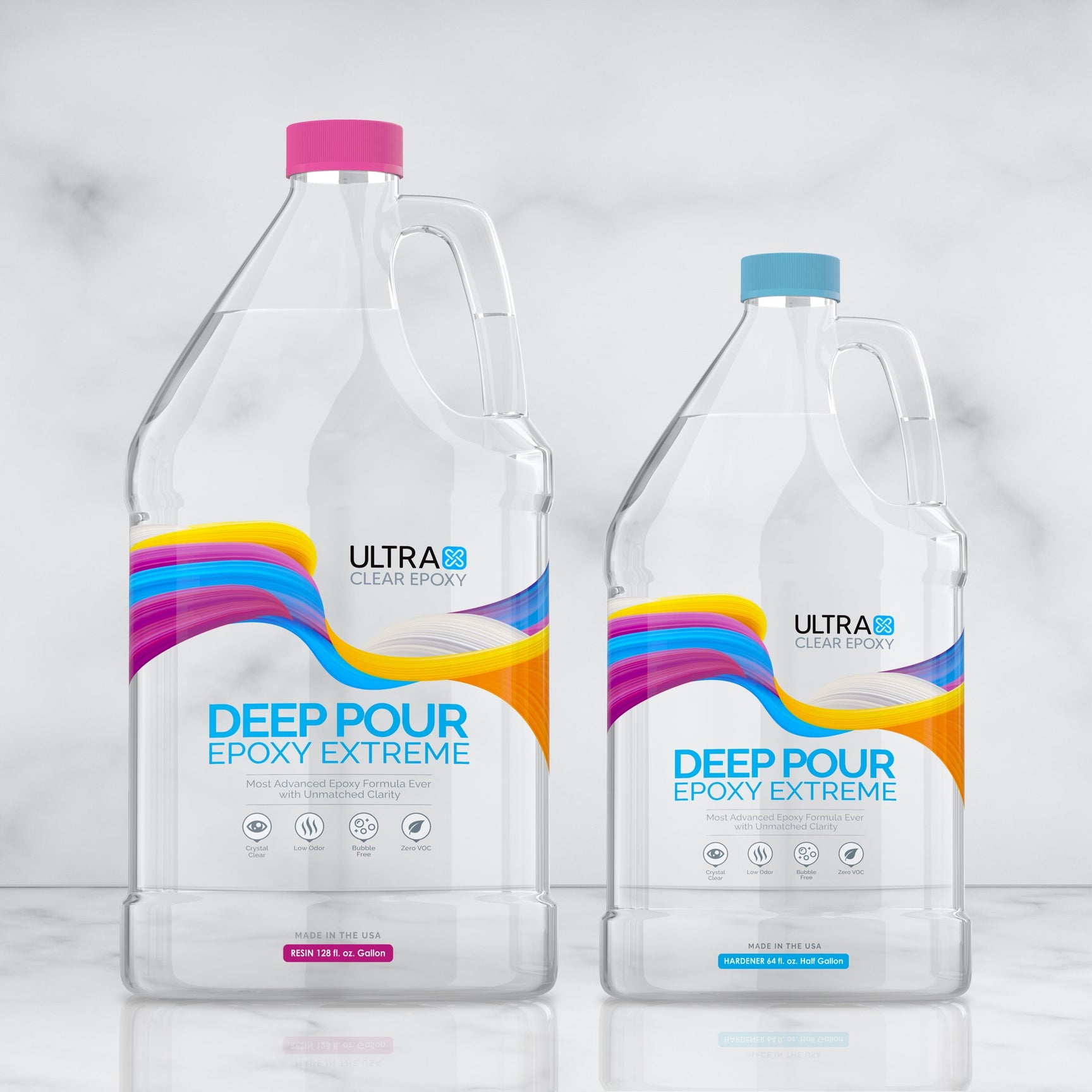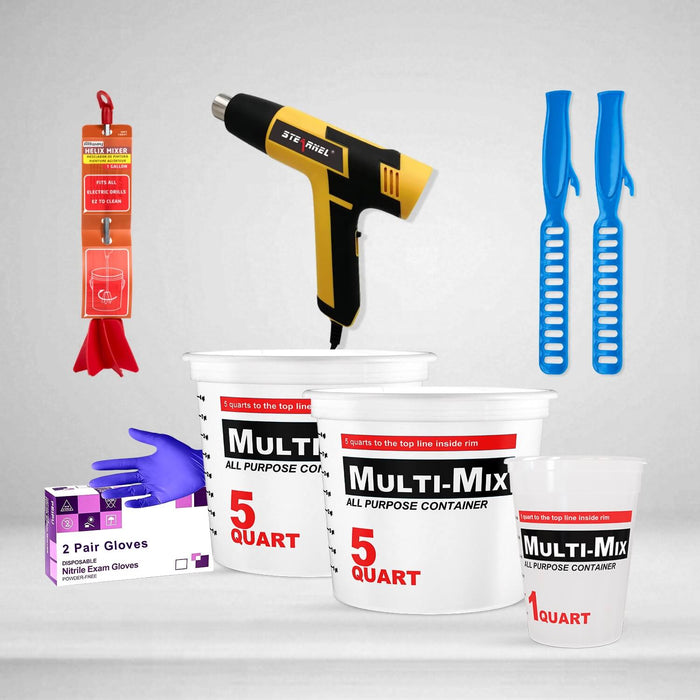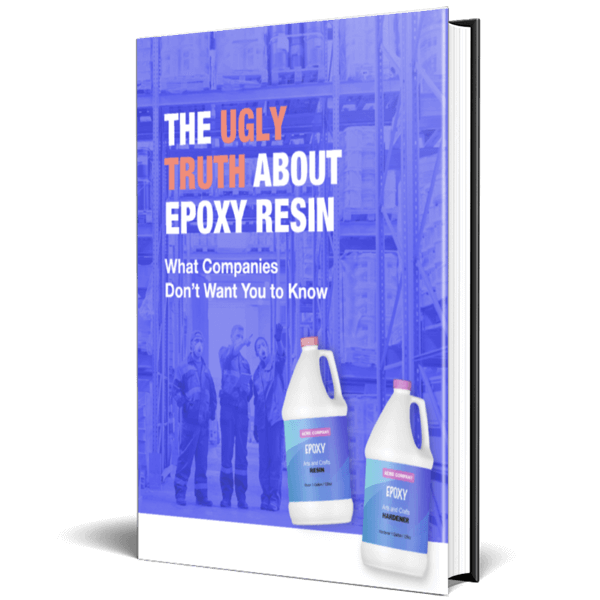Epoxy resin and wood varnishes are some of the most common choices for sealing wooden surfaces. These sealants are designed to provide a protective layer over the wood that shields it from various types of damage. This protection varies by varnish type, though nearly all varnishes include moisture resistance as one of their features.
In this article, we'll talk about 6 ways epoxy resin outperforms other varnishes as a sealant for wood surfaces.
What Exactly Is a Varnish?
A varnish is a transparent, protective finish or film primarily used in wood finishing but also for other materials. Varnish is traditionally a combination of drying oil, resin, and a solvent or thinner that cures by air when exposed to oxygen.
The qualities of the final film that a varnish imparts to a wooden surface depend on the specific type of resin and oil used in its formulation.

Here’s a detailed overview of varnish:
The Composition of Varnish
- Drying Oils - The most common oils used in varnishes include linseed oil, tung oil, and walnut oil. These oils allow the varnish to harden as they react with oxygen in the air.
- Resins - Resins in varnish provide the body of the finish and determine many of its physical characteristics. Common resins used in varnish include alkyd, polyurethane, acrylic, and phenolic resins. Each type of resin offers different qualities of hardness, durability, and resistance.
- Solvents or Thinners - Solvents, such as mineral spirits or turpentine, are used to control the viscosity of the varnish and aid in its application. They evaporate as the varnish dries, allowing the resin and oil to form a hard film.
The Various Types of Varnish
- Oil-based Varnish - Made from drying oils and resins, oil-based varnishes provide a durable and water-resistant finish, making them ideal for surfaces exposed to moisture.
- Polyurethane Varnish - Known for its toughness, polyurethane varnishes are highly resistant to abrasions, scratches, and chemicals.
- Spar Varnish - Designed for outdoor use, spar varnish contains UV blockers to resist sunlight and is flexible enough to withstand the wood's expansion and contraction caused by weather changes.
- Acrylic Varnish - Water-based and fast-drying, acrylic varnish is less odorous and more environmentally friendly than traditional oil-based varnishes.
Common Uses of Varnish
- Protection - Varnish forms a hard, protective shell over wood that prevents damage from water, dirt, and wear, thereby extending the life of the wood.
- Aesthetics - It enhances the natural beauty of the wood by adding a rich, glossy (or satin, depending on the finish) appearance that deepens the color of the wood grain.
- Special Applications - Certain types of varnish are used for specific purposes, such as marine varnish for boats, which offers additional resistance to saltwater and sun.

While varnish is generally a versatile and effective way to protect wooden furniture, flooring, and decorative items, its often lacking in physical durability, making it easily scratched. This in turn can break the seal and expose the substrate material to the very forms of damage the varnish was meant to protect from.
Nonetheless, its wide range of formulations allows for use in diverse environments and applications, making it a staple in both amateur and professional woodworking. Yet for most users there's a better option when it comes to protecting and enhancing their surfaces—epoxy resin.
6 Ways Epoxy Outperforms Varnishes on Wood
The choice of sealant for your wood surfaces is one that shouldn't be made lightly. Every type of varnish has its own set of pros and cons, with some being advantageous in one area but struggling to persist in another.
There's one type of sealant, however, that stands above the rest in most ways, excelling at many forms of protection, and that sealant is epoxy resin.

Here's a list of 6 areas in which epoxy excels over other varnishes:
- Durability and Hardness
- Moisture Resistance
- Aesthetic Versatility
- Thickness and Self-Leveling Properties
- Chemical Resistance
- Longevity
Below, we'll take a look at each area in detail.
Area #1: Durability and Hardness
Epoxy resin forms a harder and more durable surface compared to varnish.
Once cured, epoxy provides a solid, plastic-like coating that is highly resistant to impacts, scratches, and daily wear and tear. This makes it ideal for surfaces that see frequent use, such as tabletops, bar tops, and floors.
In contrast, varnish, while protective, is generally softer and can be prone to scratches and dents over time. There are a couple of varnishes that come closer to epoxy's sheer resilience, notably polyurethane, but none of them can match it.
Area #2: Moisture Resistance
One of the standout features of epoxy is its exceptional moisture resistance.
Epoxy creates a waterproof barrier that completely seals the wood, protecting it from water damage, stains, and warping. This is particularly beneficial for wooden items used outdoors or in humid environments, like kitchens and bathrooms.
Varnishes, while offering some measure of moisture resistance, do not provide the same level of impermeability and can sometimes allow moisture to penetrate, especially if the finish becomes compromised.
Area #3: Aesthetic Versatility
Epoxy is also highly prized for its aesthetic versatility.
It can be clear and glossy, enhancing the natural beauty of the wood grain, or it can be tinted with dyes and pigments to achieve a wide range of colors and effects.
Epoxy can also encapsulate objects, such as coins, photos, or leaves, within a clear, glossy medium, creating unique decorative pieces. Varnishes generally enhance the wood's natural color and texture but do not offer the same options for customization and artistic expression.
Area #4: Thickness and Self-Leveling Properties
Epoxy can be applied in much thicker layers than varnish without running or sagging, thanks to its self-leveling properties. This allows for a more substantial coating in a single application, providing a deep, lustrous finish that can fill in cracks and crevices in the wood.
Moreover, specialized epoxy resins exist that allow for tremendous depths in a finish. These are called Deep Pour Epoxies.
The thickness of epoxy also adds to the overall depth and clarity of the finish, which is difficult to achieve with varnishes.
Area #5: Chemical Resistance
Epoxy coatings are highly resistant to many chemicals, making them suitable for environments where spills of solvents, oils, and other harsh substances are likely. This chemical resistance ensures that the finish remains intact and the wood is protected even under harsh conditions.
Varnish, depending on its formulation, can be more susceptible to damage from chemical exposure, which might result in staining or a degraded finish.
Area #6: Longevity
Due to its enduring composition, an epoxy finish can last much longer than a varnish finish under similar conditions. Epoxy’s superior resistance to fading, yellowing (with the right UV stabilizers), scratching, and peeling contributes to its longevity, reducing the need for frequent refinishing. This makes epoxy a cost-effective option in the long run, despite its higher upfront cost compared to varnish.
UltraClear Epoxy: The ultimate finish for wooden surfaces.
As with any material, epoxy resin has both pros and cons. But no other sealant has so few weaknesses, and that's what puts epoxy above all other options when it comes to being a finish for wooden surfaces—even more so for premium epoxies like our UltraClear products.
You can find our UltraClear Epoxy products on the following pages:
- UltraClear Bar & Table Top Epoxy: The classic choice for bar tops, countertops, and table tops. Rock-solid, waterproof, and crystal-clear.
- UltraClear Deep Pour Epoxy: Our deep pour casting resin. Ideal for thick layers, such as those needed for river tables.
- UltraClear Art & Craft Epoxy: Our arts and crafts resin, designed for smaller artistic endeavors which typically involve resin molds and require a bit more fluidity than bar top epoxy.
With high chemical and physical resistance, epoxy can withstand and endure many forms of wear and tear without breaking a sweat or showcasing any cosmetic damage.
Plus, in addition to its ease of application, it also requires little upkeep to maintain its pristine appearance. With a high-quality epoxy finish, you can expect a minimum lifespan of 7 years, with no need for reapplication. Beyond that, it's a breeze to renew that coating, requiring only a light sanding and a fresh layer of epoxy.
Don't miss out! Get your UltraClear Epoxy today!
Have questions? Want advice? Contact us!
If you have any questions about epoxy resin, or if you'd like assistance in planning an epoxy project, please reach out to us at UltraClear Epoxy—our epoxy experts are ready to assist!
You can contact us via phone or email here. During business hours, you can also text chat online with one of our resin specialists by clicking the Help button at the bottom of your screen.
In our online store, you'll find a variety of useful tools and supplies, ideal for resin projects, plus our award-winning UltraClear Bar & Table Top Epoxy and our UltraClear Deep Pour Epoxy.




